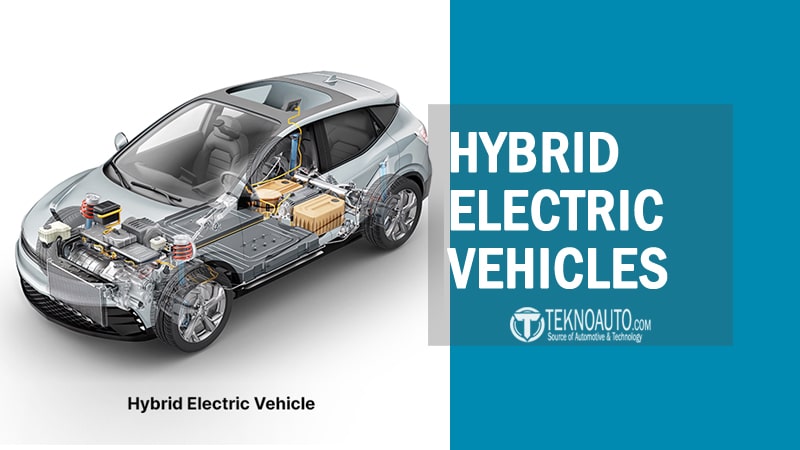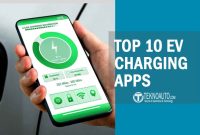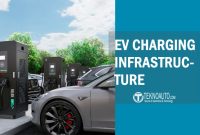When the conversation turns to greener transportation, Electric Vehicles (EVs) often steal the spotlight. Yet between the internal combustion engine and the fully electric drivetrain lies a technological bridge that has reshaped automotive efficiency—the Hybrid Electric Vehicle (HEV).
These vehicles combine the best of both worlds: the tried-and-true gasoline engine and the innovation of electric propulsion, delivering improved fuel economy, lower emissions, and a smoother driving experience without the need for charging infrastructure.
HEVs have been on the road for decades, but their importance is growing again as automakers and consumers seek practical solutions during the global shift toward cleaner mobility. They serve as a transitional technology—ideal for drivers who aren’t ready for full electrification but want better performance, lower fuel costs, and fewer emissions than conventional cars.
Whether you’re considering your first hybrid, comparing it to plug-in and battery electric alternatives, or just curious about how the technology works under the hood, this guide will walk you through the core components, benefits, types, comparisons, and real-world use cases of hybrid electric vehicles in 2025 and beyond.
What Is a Hybrid Electric Vehicle (HEV)?
A Hybrid Electric Vehicle (HEV) is a Types of Electric Vehicles that combines two different power sources: a traditional internal combustion engine (ICE) and an electric motor powered by a battery. Unlike fully electric vehicles (BEVs), HEVs do not need to be plugged into a charger—instead, they self-charge through regenerative braking and the energy generated by the gasoline engine.
This hybrid system allows the vehicle to switch seamlessly between electric-only, gasoline-only, or a combination of both power sources, depending on driving conditions. For example, at low speeds or during idle, the car may operate solely on electric power, reducing fuel use and emissions. At higher speeds or during rapid acceleration, the gasoline engine provides additional power, while the electric motor supports efficiency.
HEVs are particularly effective in urban and stop-and-go traffic, where frequent braking and lower speeds allow the electric motor to play a more significant role. Over time, this results in better fuel economy, reduced tailpipe emissions, and quieter driving—without any change in refueling behavior compared to a conventional gasoline car.
In short, an HEV offers a smart compromise: the efficiency of electrification without the infrastructure demands of full EVs, and the reliability of gasoline without the fuel-hungry drawbacks of traditional engines.
Core Components of a Hybrid Electric Vehicle
Behind the smooth operation of every Hybrid Electric Vehicle (HEV) lies a carefully engineered system of interdependent components. These parts work together to optimize performance, reduce emissions, and deliver a seamless driving experience that blends electric and gasoline power. Understanding these components is key to appreciating how HEVs achieve their unique efficiency.
Internal Combustion Engine (ICE)
The ICE in an HEV typically runs on gasoline and serves as one of the primary power sources. However, unlike conventional vehicles, the engine doesn’t always run continuously. It activates only when necessary—for example, during highway driving, aggressive acceleration, or when the battery is depleted. This selective use improves fuel efficiency and reduces wear over time.
Electric Motor (or Motors)
The electric motor in an HEV works both independently and in conjunction with the gasoline engine. It is responsible for:
- Powering the vehicle during low-speed driving
- Assisting the ICE during acceleration
- Capturing energy through regenerative braking
Depending on the hybrid system design (e.g., full, mild, or series hybrid), the electric motor may play a more dominant or supporting role.
Hybrid Battery Pack
HEVs use a high-voltage battery pack to store and supply energy to the electric motor. Unlike plug-in hybrids or BEVs, this battery is not recharged via an external source—it relies entirely on regenerative braking and the ICE for recharging.
Battery types commonly used include:
- Nickel-Metal Hydride (NiMH): Reliable and durable; still used in many Toyota hybrids.
- Lithium-Ion (Li-ion): Lighter and more energy-dense; increasingly popular in newer HEVs.
Power Control Unit (PCU) and Inverter
The PCU acts as the brain of the hybrid system, coordinating the flow of energy between the battery, electric motor, and engine. It includes an inverter, which converts direct current (DC) from the battery into alternating current (AC) for the motor, and vice versa during regenerative braking.
This intelligent control unit ensures the hybrid system operates efficiently under varying driving conditions.
Transmission System
Most HEVs use a specialized transmission that can seamlessly combine power from the electric motor and ICE. Some hybrids employ Electronic Continuously Variable Transmission (e-CVT) systems, which offer smooth power delivery without traditional gear shifts.
Regenerative Braking System
Rather than wasting energy as heat during braking, HEVs use regenerative braking to convert kinetic energy back into electrical energy, which is then stored in the battery. This system extends battery range and reduces reliance on the engine.
Together, these components make up a hybrid drivetrain capable of adapting to various driving scenarios—offering lower fuel consumption in the city and strong performance on the highway. This smart interplay between mechanical and electrical systems is what makes HEVs both efficient and practical for a broad range of drivers.
Types of Hybrid Vehicles
Hybrid Electric Vehicles (HEVs) aren’t all created equal. While they share the fundamental concept of combining a gasoline engine with an electric motor, the way these systems interact varies widely. This has led to several distinct categories of hybrid designs—each with its own strengths, limitations, and use cases.
Understanding the different types of hybrid vehicles can help drivers choose the configuration that best suits their lifestyle, driving habits, and environmental priorities.
Mild Hybrid (MHEV)
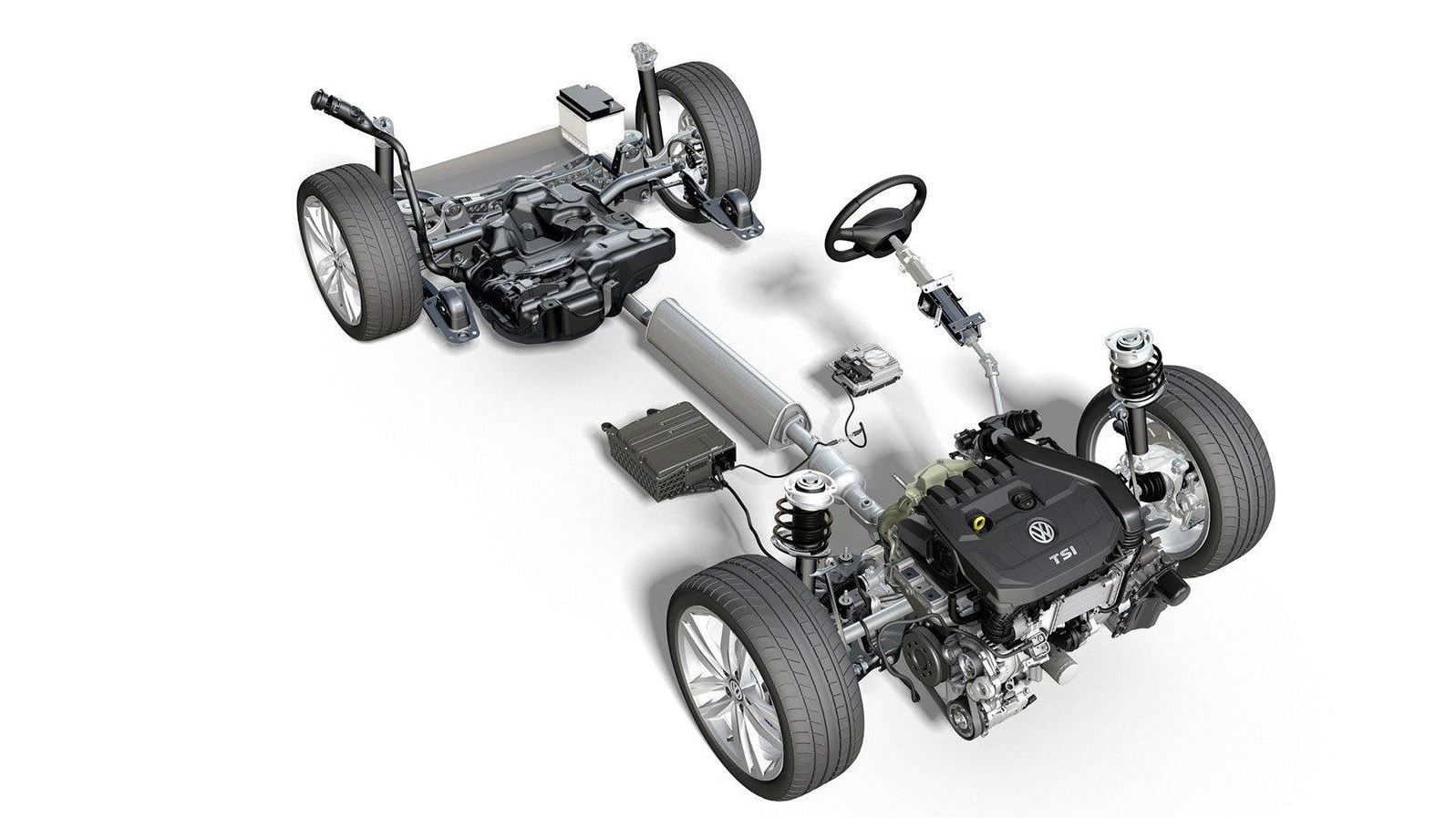
A Mild Hybrid Electric Vehicle uses a small electric motor to support the internal combustion engine but cannot power the vehicle on its own. The motor assists during acceleration, smooths out start-stop functions, and improves fuel economy slightly.
Key Traits:
- Cannot drive on electric power alone
- Smaller battery and lower cost than full hybrids
- Often uses 48V electrical systems
Use Case: Ideal for drivers who want better efficiency without a major change in driving experience
Full Hybrid (FHEV)

A Full Hybrid can operate using the engine, the electric motor, or a combination of both. This system allows for short-distance electric-only driving, especially in city environments, and delivers greater fuel savings.
Key Traits:
- Capable of all-electric driving at low speeds
- Automatically switches between power sources based on load
- Found in popular models like the Toyota Prius and Honda Accord Hybrid
Use Case: Great for urban driving and stop-and-go traffic
Series Hybrid

In a Series Hybrid, the electric motor is the only power source that drives the wheels. The gasoline engine acts only as a generator, recharging the battery or powering the motor indirectly.
Key Traits:
- No mechanical connection between engine and wheels
- Smoother and quieter driving experience
- More complex power management
Use Case: Efficient for short commutes with frequent stops
Parallel Hybrid

A Parallel Hybrid connects both the engine and the electric motor to the wheels. Either one can power the vehicle independently or together, depending on demand.
Key Traits:
- Simpler and more efficient on highways
- Most common hybrid layout in today’s market
- Used in models like the Hyundai IONIQ Hybrid
Use Case: Balanced for both city and highway driving
Series-Parallel (Power-Split) Hybrid
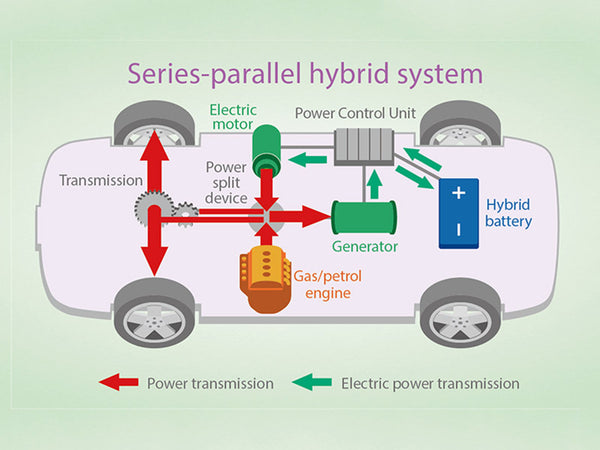
This is a combination of both series and parallel designs, offering the flexibility to switch between modes based on conditions. It delivers the benefits of both configurations and is widely used in full-featured hybrid models.
Key Traits:
- Adaptive and intelligent power delivery
- Excellent overall fuel efficiency
- Found in many Toyota Hybrid Synergy Drive vehicles
Use Case: Ideal for drivers seeking versatility and high efficiency in all conditions
By recognizing these different hybrid architectures, consumers can make more informed decisions—not just based on fuel economy, but also on driving behavior, geography, and budget. Whether you’re leaning toward simplicity or innovation, there’s a hybrid type designed to meet that need.
Benefits of Hybrid Electric Vehicles
Hybrid Electric Vehicles (HEVs) have gained widespread popularity not just because they’re innovative—but because they offer practical, real-world benefits that appeal to both budget-conscious drivers and eco-minded consumers. By combining electric efficiency with the reliability of gasoline engines, hybrids bridge the gap between traditional cars and full electric vehicles in a way that’s accessible, flexible, and cost-effective.
Improved Fuel Efficiency
One of the biggest advantages of driving a hybrid is enhanced fuel economy. Because the electric motor assists or even replaces the gasoline engine during low-speed or stop-and-go conditions, fuel consumption is significantly reduced—especially in city driving. Many full hybrids can achieve over 50 MPG (miles per gallon) without compromising on performance.
Even mild hybrids, which use smaller batteries and motors, typically show a 10–15% improvement in fuel economy compared to their conventional counterparts.
Lower Greenhouse Gas Emissions
HEVs produce fewer tailpipe emissions than traditional internal combustion vehicles. This reduction is achieved not only through less fuel burned, but also through cleaner, more efficient combustion cycles managed by advanced onboard systems.
Over time, these emission savings can have a real impact, especially when adopted at scale. Drivers looking to reduce their environmental footprint without going fully electric often see hybrid vehicles as the best of both worlds.
No Need to Plug In
Unlike Plug-in Hybrid Electric Vehicles (PHEVs) or Battery Electric Vehicles (BEVs), standard HEVs do not require external charging. They recharge their battery automatically through regenerative braking and support from the gasoline engine, making them extremely convenient for users without home chargers or regular access to EV charging stations.
This makes HEVs an ideal choice for:
- Apartment dwellers
- Rural drivers
- Fleets and long-distance commuters
Smooth and Quiet Driving Experience
With electric motors handling low-speed propulsion, hybrids often deliver a quieter, smoother ride—especially in traffic. The transition between electric and gasoline modes is typically seamless in full hybrids, contributing to a more relaxed and refined driving experience.
Reduced Long-Term Operating Costs
While the upfront cost of a hybrid may be higher, long-term savings often outweigh the initial investment. These savings come from:
- Lower fuel bills
- Less wear on brake systems due to regenerative braking
- Extended life of internal engine components
In regions that offer government incentives, tax credits, or hybrid-only perks (e.g., access to carpool lanes), total cost of ownership becomes even more attractive.
Enhanced Resale Value
As demand for greener vehicles continues to rise, hybrids tend to retain strong resale value, particularly well-known models from trusted manufacturers. This makes HEVs a solid choice not only for environmental reasons, but also for smart financial planning.
The benefits of hybrid electric vehicles are broad and tangible: they save money, reduce emissions, simplify ownership, and offer a smoother ride—all without drastically changing how or where you drive.
Common Challenges and Limitations of Hybrid Electric Vehicles
While Hybrid Electric Vehicles (HEVs) offer numerous benefits, they aren’t without trade-offs. Understanding these limitations is essential for making an informed decision, particularly when weighing HEVs against full EVs, PHEVs, or conventional gasoline vehicles. By evaluating both the pros and cons, consumers can determine whether a hybrid truly fits their driving habits and lifestyle.
Higher Initial Purchase Price
One of the most cited drawbacks of HEVs is their higher upfront cost compared to traditional internal combustion engine (ICE) vehicles. This price difference is primarily due to the added complexity of the hybrid drivetrain, including the battery pack, electric motor, and integrated control systems.
Although long-term fuel savings may offset this cost, the initial sticker shock can be a barrier for price-sensitive buyers, especially in markets without government subsidies or incentives for hybrid vehicles.
Battery Replacement Costs
While hybrid batteries are designed to last 8–15 years or more, they will eventually degrade and need replacement. Depending on the model and battery type, replacement costs can range from $1,000 to $4,000 or more, though prices have been gradually decreasing.
Fortunately, battery warranties from most automakers cover replacements for up to 100,000 miles or longer. Still, potential battery failure can be a concern—especially for buyers considering older or second-hand hybrids.
Reduced Trunk or Cabin Space
Because HEVs require space to house the high-voltage battery and associated components, they sometimes sacrifice cargo space or rear legroom. In sedans and hatchbacks, the battery pack is often located under the rear seat or in the trunk, reducing storage flexibility compared to their non-hybrid counterparts.
This may be a consideration for families, travelers, or drivers who frequently haul bulky items.
Complexity in Maintenance and Repairs
Although hybrid systems are generally reliable, their dual drivetrain (gasoline + electric) introduces added mechanical and electrical complexity. As a result:
- Repairs may require specially trained technicians
- Some independent mechanics may not be qualified to work on hybrid systems
- Diagnostic procedures can be more time-consuming and expensive
While routine maintenance (like oil changes) is still required, the increased system complexity can lead to higher service costs in rare cases of failure or component malfunction.
Limited Efficiency on Highways
Hybrid vehicles typically achieve their best fuel efficiency in city driving, where the electric motor can handle stop-and-go traffic and regenerative braking recaptures energy. However, at sustained highway speeds, the gasoline engine often dominates, leading to less dramatic fuel savings compared to urban driving.
For long-distance commuters or rural drivers who spend most of their time on the highway, a hybrid might offer less return on investment than expected.
Not Ideal for Towing or Heavy Loads
Most standard HEVs aren’t designed with towing in mind. The hybrid drivetrain, particularly in fuel-focused models, may lack the torque and structural support needed for pulling trailers or hauling heavy cargo.
Drivers with towing needs may be better served by hybrid SUVs or plug-in hybrids with dedicated towing capacity, or by traditional ICE vehicles.
Understanding these limitations doesn’t negate the value of HEVs—it completes the picture. Every vehicle choice involves compromises, and knowing the potential downsides helps consumers align their decision with realistic expectations.
HEV vs BEV vs PHEV vs FCEV

Electric mobility isn’t a one-size-fits-all solution. As automakers invest in cleaner technologies, four distinct types of electrified vehicles have emerged: Hybrid Electric Vehicles (HEVs), Battery Electric Vehicles (BEVs), Plug-in Hybrid Electric Vehicles (PHEVs), and Fuel Cell Electric Vehicles (FCEVs). Though often grouped under the same “EV” label, each uses electricity differently—impacting cost, range, infrastructure needs, and environmental benefits.
Here’s a detailed look at how these technologies differ and which one might best fit your driving needs.
HEV – Hybrid Electric Vehicle
A Hybrid Electric Vehicle (HEV) is the most traditional type of electrified car. It combines a gasoline engine with a small electric motor and battery, but unlike plug-ins, it doesn’t require external charging. The system works automatically, switching between or combining power sources depending on driving conditions.
- Charging method: Self-charging via regenerative braking and engine power
- Emissions: Reduced compared to conventional vehicles
- Fuel efficiency: High in city driving, where regenerative braking is frequent
- Examples: Toyota Corolla Hybrid, Honda Insight, Hyundai Elantra Hybrid
HEVs are ideal for drivers who want improved fuel economy and lower emissions, without worrying about plugging in or charging infrastructure.
BEV – Battery Electric Vehicle
Battery Electric Vehicles (BEVs) run entirely on electricity stored in a large rechargeable battery. They don’t use any fuel at all—no engine, no exhaust, no tailpipe emissions. BEVs must be charged via plug-in stations at home or public charging points.
- Charging method: Requires external charging from wall outlet or EV charger
- Driving range: Varies by battery size, typically 150–400 miles
- Environmental impact: Zero emissions during operation
- Examples: Tesla Model Y, Nissan Leaf, Chevy Bolt EV
BEVs are best suited for drivers who can access reliable charging and want a truly emission-free vehicle experience.
PHEV – Plug-in Hybrid Electric Vehicle
A Plug-in Hybrid Electric Vehicle (PHEV) blends the benefits of BEVs and HEVs. It has a larger battery than an HEV, which enables limited electric-only driving, but also includes a gasoline engine for backup. Unlike HEVs, PHEVs require charging to take full advantage of the EV mode.
- Electric-only range: Typically 20–50 miles
- Power source: Battery and gasoline engine
- Charging method: Plug-in charging + regenerative braking
- Examples: Kia Niro PHEV, Mitsubishi Outlander PHEV, Toyota Prius Prime
PHEVs are a good match for commuters who drive short distances daily but want the flexibility for longer trips without relying solely on charging stations.
FCEV – Fuel Cell Electric Vehicle
Fuel Cell Electric Vehicles (FCEVs) use compressed hydrogen to generate electricity onboard, powering the vehicle’s electric motor. The only emission from an FCEV is water vapor. They can be refueled in just minutes, much like gasoline vehicles.
- Fuel source: Hydrogen
- Driving range: Comparable to gasoline cars (300–400 miles)
- Refueling time: Around 3–5 minutes
- Examples: Toyota Mirai, Hyundai Nexo
FCEVs offer fast refueling and long range but are limited by the availability of hydrogen refueling infrastructure, which is currently only available in select regions.
Side-by-Side Comparison Table
| Feature | HEV | BEV | PHEV | FCEV |
|---|---|---|---|---|
| Main Power Source | Gasoline + electric motor | Battery only | Battery + gasoline engine | Hydrogen fuel cell |
| Charging Method | Self-charging (no plug) | External charging only | Plug-in + regenerative | Hydrogen refueling |
| Electric-Only Range | Minimal (a few miles) | 150–400 miles | 20–50 miles | 300–400 miles |
| Refueling Time | Like gasoline cars | Several hours (depends on charger) | 2–4 hours (plus gas refill) | ~5 minutes |
| Emissions | Lower than gas cars | Zero emissions | Zero in EV mode | Zero (water vapor only) |
| Best For | Fuel-saving without charging | Full electric daily driving | Short EV trips + long travel | Long range + fast refueling |
Use Case Summary
| Use Case | Best Option |
|---|---|
| No access to home charging | HEV or FCEV (if hydrogen stations are available) |
| Short daily commutes + charging access | PHEV |
| Want zero emissions + full electric lifestyle | BEV or FCEV |
| Frequent long-distance trips | PHEV, HEV, or FCEV |
| Maximum fuel savings + government incentives | BEV or PHEV |
| Fast refueling with zero tailpipe emissions | FCEV |
Understanding these distinctions helps buyers choose not just the right vehicle, but the right ownership experience. Whether you value range, charging freedom, fuel savings, or environmental impact, there’s a configuration tailored to your lifestyle.
Regenerative Braking in Hybrid Cars
One of the most innovative features of hybrid electric vehicles (HEVs) is regenerative braking—a system that not only slows the vehicle down but also captures energy that would otherwise be wasted. This technology plays a crucial role in improving fuel efficiency and reducing wear on traditional brake components, making it both an environmentally and economically smart addition to hybrid drivetrains.
How Regenerative Braking Works
In a traditional car, pressing the brake pedal causes brake pads to clamp onto rotors, converting kinetic energy into heat—a process that wastes valuable energy. In contrast, hybrid vehicles equipped with regenerative braking use the electric motor as a generator when decelerating.
Here’s what happens:
- When the driver brakes or coasts, the electric motor reverses function and begins to generate electricity instead of consuming it.
- This process creates resistance, which slows the wheels while simultaneously converting kinetic energy into electrical energy.
- The recovered energy is stored in the hybrid battery, ready to assist the motor during the next acceleration or cruise.
The amount of energy recovered depends on vehicle speed, braking intensity, and the battery’s state of charge.
Benefits of Regenerative Braking
1. Improved Fuel Economy: By capturing and reusing energy that would otherwise be lost, regenerative braking reduces how often the gasoline engine needs to engage, leading to better fuel economy—especially in stop-and-go traffic.
2. Extended Battery Life: The process of regularly topping off the battery helps maintain its charge level without over-reliance on the internal combustion engine, which can extend overall battery life.
3. Reduced Brake Wear: Because the regenerative system handles a significant portion of braking, the traditional brake pads and rotors experience less friction, which means:
- Fewer trips to the mechanic for brake service
- Lower maintenance costs over the vehicle’s lifespan
4. Smoother Deceleration: In many hybrids, regenerative braking provides a gentle and controlled slowdown, especially in city driving or downhill situations. Some vehicles even offer adjustable regen levels to tailor the feel of deceleration.
Limitations to Be Aware Of
While regenerative braking is highly effective, it has a few limitations:
- Not a full replacement: In hard braking or emergency stops, traditional friction brakes still provide the majority of stopping power.
- Diminishing returns at high speeds: Regen braking is most effective at low to moderate speeds; its energy recovery drops off on highways.
- Limited storage capacity: Once the battery is fully charged, any excess regenerated energy cannot be stored and is dissipated as heat instead.
Regenerative braking is a defining feature of hybrid vehicles. It helps conserve energy, reduce fuel costs, extend component life, and provide a driving experience that’s both responsive and efficient. While it doesn’t completely eliminate the need for conventional braking, it greatly enhances the overall sustainability of hybrid systems.
Popular Hybrid Electric Vehicles in the Market (2025)
The hybrid market has matured dramatically over the past decade, and 2025 promises an even wider selection of efficient, tech-forward vehicles. From compact sedans to full-size SUVs, automakers are investing heavily in hybrid technology to meet global emissions goals and consumer demand for smarter fuel alternatives.
Below are some of the most anticipated and best-selling hybrid electric vehicles (HEVs) shaping the market this year.
Toyota Prius (2025 Model)
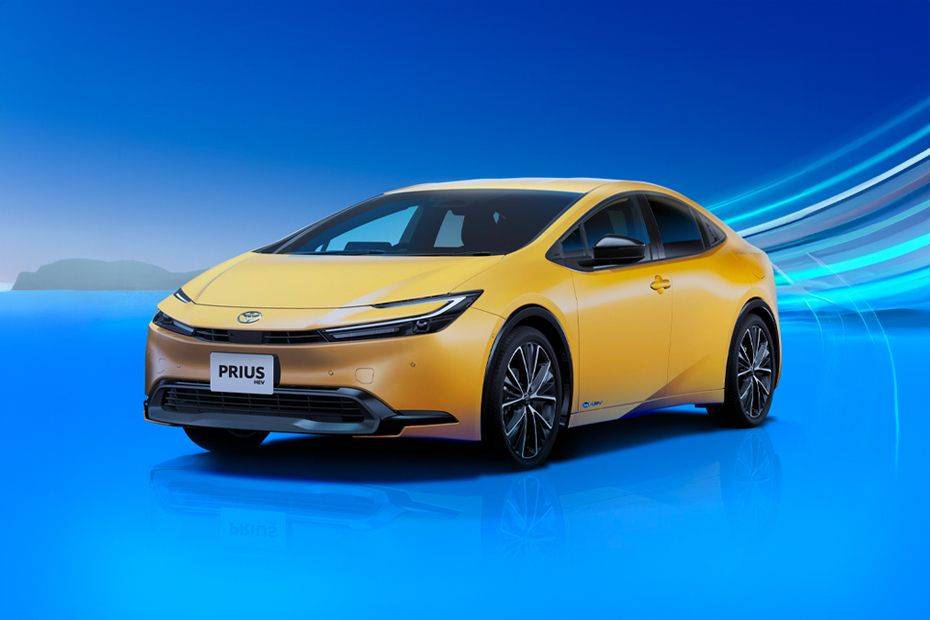
As the original hybrid trailblazer, the Prius remains a top choice for eco-conscious drivers. The 2025 model features sleeker styling, improved power output, and a combined fuel economy exceeding 55 MPG.
Its reliability, efficiency, and name recognition continue to make it a benchmark in the hybrid category.
Honda Accord Hybrid
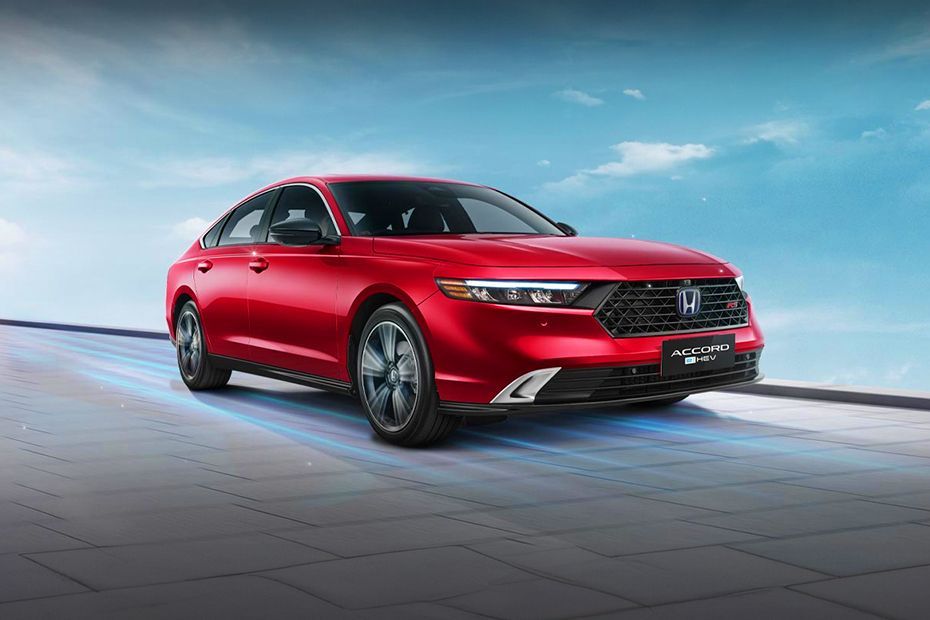
A perfect blend of performance and practicality, the Accord Hybrid delivers an upscale ride with excellent fuel economy.
The 2025 model includes updated interior tech and advanced safety features, maintaining its position as a top-rated midsize hybrid sedan for families and commuters alike.
Hyundai Sonata Hybrid

Offering a sophisticated look and a smooth ride, the Sonata Hybrid stands out with unique features like a solar panel roof to help recharge the battery.
With a spacious cabin and refined driving dynamics, it’s an appealing option in the full-size sedan class.
Ford Escape Hybrid
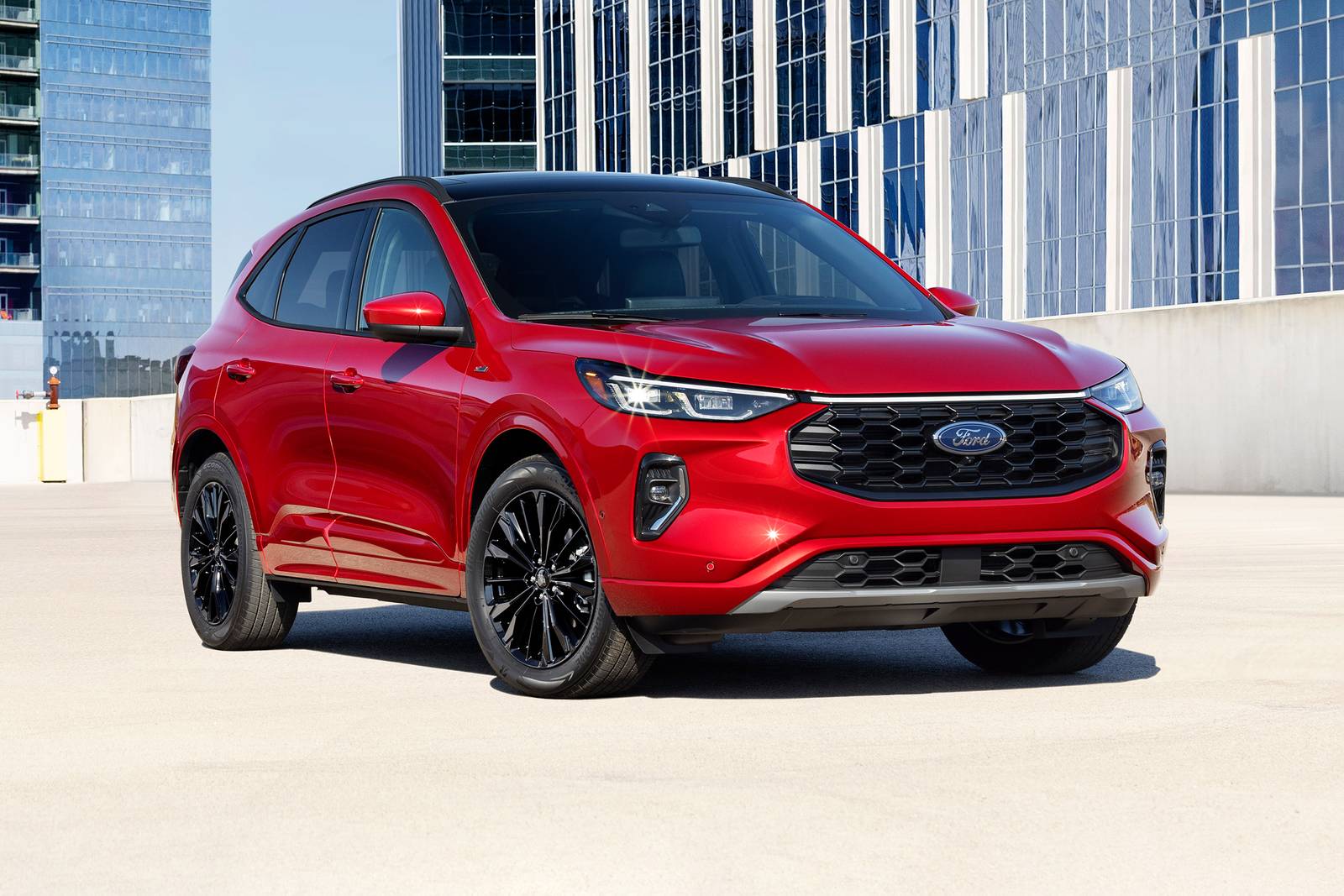
This compact SUV combines flexibility, cargo space, and a hybrid drivetrain in a well-balanced package.
The 2025 Escape Hybrid features improved regenerative braking, real-world fuel economy in the high 40s (MPG), and optional AWD—perfect for suburban families and light adventuring.
Kia Sportage Hybrid

Known for its bold styling and affordability, the Sportage Hybrid offers a refined interior, efficient turbo-hybrid engine, and high-end safety tech.
With over 40 MPG combined fuel economy and plenty of cabin space, it competes directly with the Toyota RAV4 Hybrid.
Toyota RAV4 Hybrid
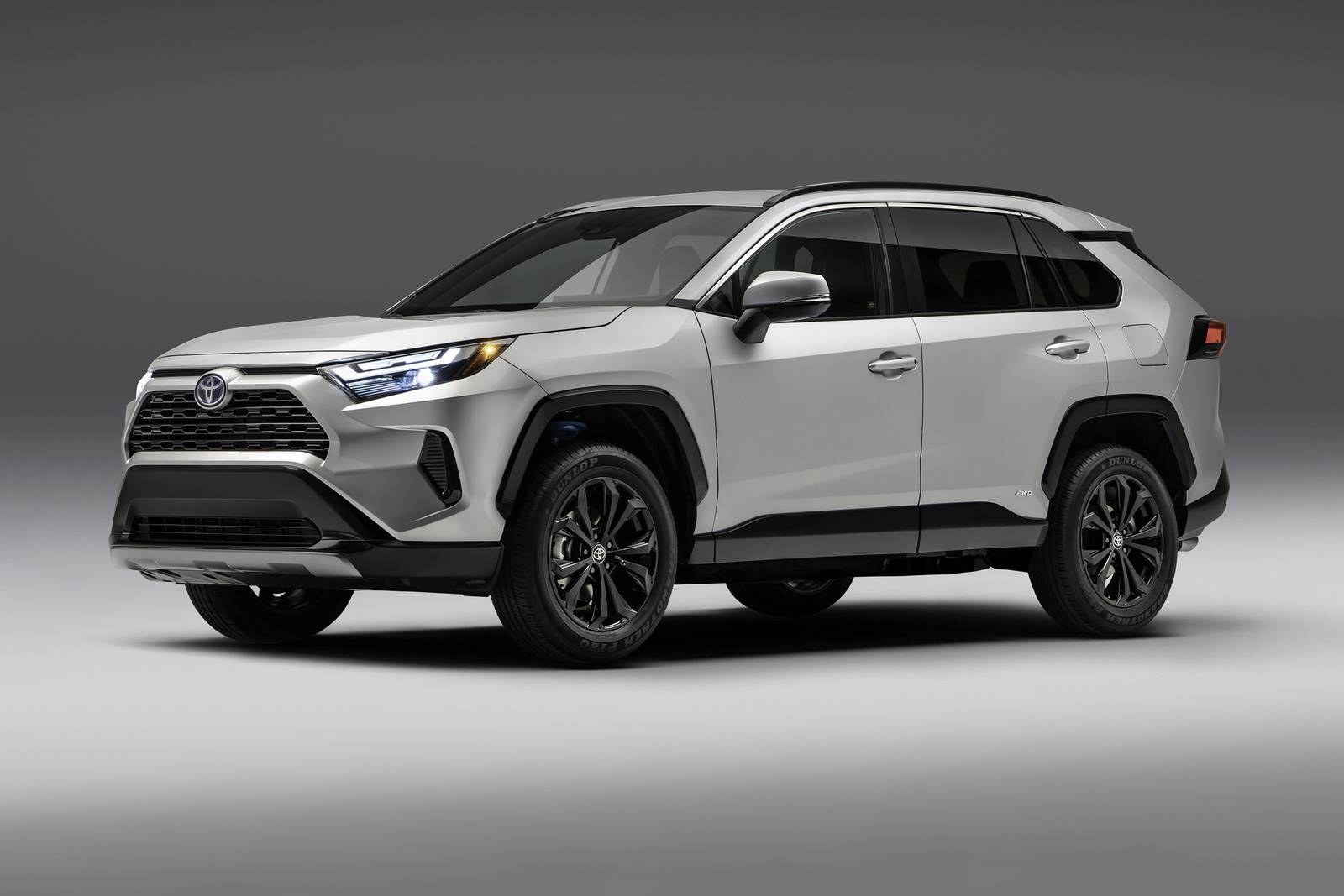
One of the most popular hybrid SUVs globally, the RAV4 Hybrid blends rugged utility with exceptional fuel economy.
The 2025 model features upgraded infotainment, improved ride quality, and enhanced battery efficiency, reinforcing its dominance in the compact hybrid SUV segment.
Hyundai Elantra Hybrid

Compact yet packed with value, the Elantra Hybrid delivers excellent fuel savings, user-friendly tech, and sharp styling.
It’s especially attractive to first-time buyers or urban commuters looking for a reliable and efficient daily driver.
Lexus RX 500h

For luxury hybrid seekers, the RX 500h offers premium materials, refined performance, and a new high-output hybrid EV Powertrain.
With quick acceleration and impressive fuel economy for its class, it’s a standout among midsize luxury SUVs.
Toyota Sienna (Hybrid-Only Minivan)

Unique among minivans, the 2025 Toyota Sienna is offered exclusively as a hybrid, achieving around 36 MPG combined—remarkable for a three-row family hauler. It’s an excellent choice for parents prioritizing space and fuel economy.
Quick Comparison Table of Popular HEVs (2025)
| Model | Type | MPG (Est.) | Highlight Feature |
|---|---|---|---|
| Toyota Prius | Compact Sedan | 55+ MPG | Iconic efficiency, redesigned look |
| Honda Accord Hybrid | Midsize Sedan | 48 MPG | Spacious & tech-rich interior |
| Hyundai Sonata Hybrid | Full-Size Sedan | 52 MPG | Solar roof panel |
| Ford Escape Hybrid | Compact SUV | 44 MPG | Optional AWD, great for families |
| Kia Sportage Hybrid | Compact SUV | 43 MPG | Bold design, competitive pricing |
| Toyota RAV4 Hybrid | Compact SUV | 40 MPG | Rugged, well-rounded option |
| Hyundai Elantra Hybrid | Compact Sedan | 54 MPG | Budget-friendly, urban-friendly |
| Lexus RX 500h | Luxury SUV | 35 MPG | Premium power + efficiency |
| Toyota Sienna Hybrid | Minivan | 36 MPG | Only minivan in hybrid-only format |
From budget-friendly compacts to luxury crossovers, the hybrid market in 2025 is more versatile than ever. Whether you prioritize fuel economy, interior space, or high-end features, there’s a hybrid electric vehicle designed for your lifestyle.
Conclusion
Hybrid Electric Vehicles (HEVs) represent a practical and proven solution in the evolving landscape of automotive technology. By combining the benefits of traditional internal combustion engines with electric propulsion, hybrids offer a compelling middle ground—one that delivers better fuel economy, lower emissions, and greater convenience without requiring drivers to fully commit to a charging infrastructure.
From compact sedans to spacious SUVs, the 2025 market showcases just how far hybrid technology has come. With multiple configurations, advanced regenerative systems, and growing consumer trust, HEVs are no longer niche options—they’re mainstream, reliable, and adaptable to a wide range of driving lifestyles.
Whether you’re an urban commuter, a family-focused buyer, or an environmentally conscious consumer looking for a smarter alternative to gas-only cars, a hybrid vehicle might just be the ideal next step. While not without limitations, the real-world balance they provide—in performance, practicality, and sustainability—makes HEVs an enduring choice in the global shift toward cleaner mobility.
Frequently Asked Questions (FAQ) About Hybrid Electric Vehicle (HEV)
Do hybrid cars need to be plugged in?
No. Standard Hybrid Electric Vehicles (HEVs) do not require external charging. They recharge their batteries through regenerative braking and energy from the gasoline engine. Only Plug-in Hybrid Electric Vehicles (PHEVs) need to be plugged in for charging.
How long do hybrid batteries last?
Hybrid batteries typically last between 8 to 15 years or 100,000 to 150,000 miles, depending on usage and climate. Most manufacturers provide long-term warranties for hybrid batteries, and modern battery technology has become increasingly reliable and durable.
Are hybrid cars more expensive to maintain?
Not necessarily. While hybrids may involve more complex systems, they often experience less engine wear and reduced brake pad usage due to regenerative braking. However, repairs involving the hybrid battery or electric motor may require specialized technicians.
Can hybrid vehicles run on electricity only?
Some full hybrids can drive short distances on electric power alone, especially at low speeds or in stop-and-go traffic. Mild hybrids cannot run purely on electricity. For longer all-electric driving, a PHEV or BEV (Battery Electric Vehicle) is a better choice.
Are hybrids worth it for highway driving?
Hybrid vehicles tend to perform best in city traffic, where regenerative braking is most effective. While they still offer fuel savings on highways, the benefits are less dramatic compared to urban conditions. Drivers with long-distance, high-speed commutes may also consider PHEVs or fuel-efficient gasoline vehicles.

